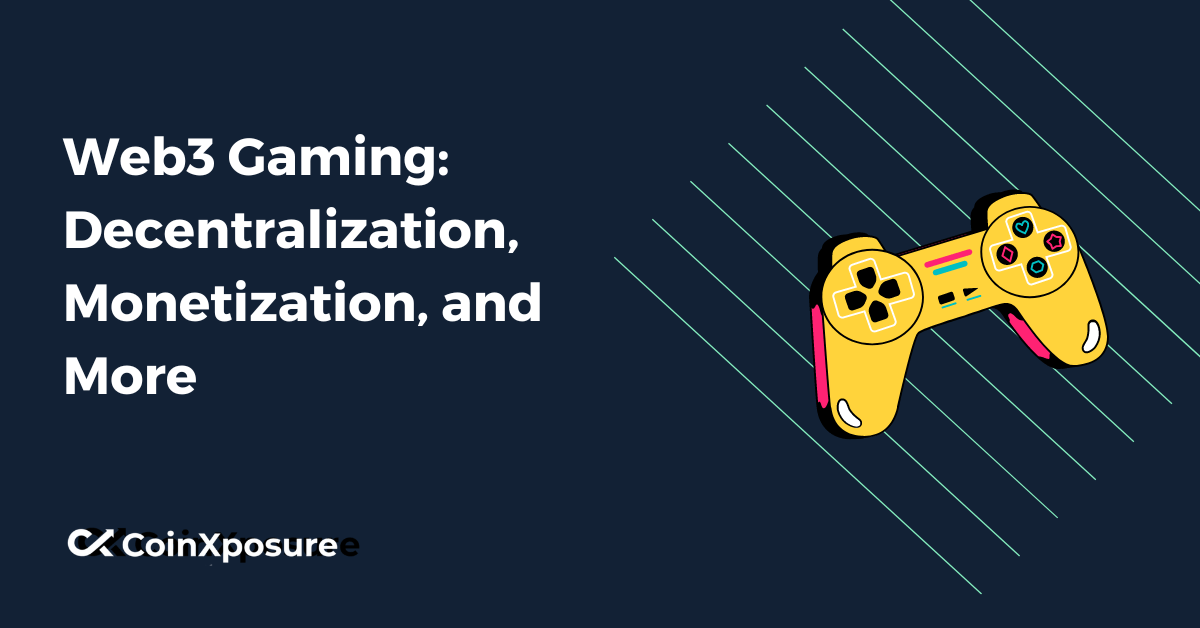Welcome to Web3 Gaming, a revolutionary frontier where decentralization, innovative monetization models, and myriad possibilities converge to redefine the gaming landscape.
In this exploration, we’ll delve into the transformative impact of blockchain technology, the advent of player-centric economies through non-fungible tokens (NFTs), and the seamless integration of cross-platform experiences.
Join us on a journey through the decentralized corridors of Web3 Gaming, where ownership, community engagement, and a new era of gaming await.
Decentralization in Web3 Gaming
Decentralization in Web3 Gaming marks a paradigm shift from traditional gaming structures, introducing blockchain technology as a cornerstone.
This approach distributes control and ownership among players, developers, and the community, fostering a more democratic gaming ecosystem.
Blockchain ensures transparency, security, and immutability, allowing players to own and trade in-game assets as non-fungible tokens (NFTs).
Decentralized game development models leverage smart contracts, reducing reliance on central authorities and enabling collaborative decision-making through decentralized autonomous organizations (DAOs).
In essence, decentralization in Web3 Gaming empowers participants, offering a glimpse into a future where the gaming experience is shaped collectively and transparently.
Monetization Strategies
Web3 Gaming introduces innovative monetization strategies that redefine how players and developers engage with the gaming economy.
- Cryptocurrency Integration:
- Incorporating cryptocurrencies as a medium of exchange within games.
- Enables secure and borderless transactions, reducing traditional payment barriers.
- Non-Fungible Tokens (NFTs) for In-Game Items:
- Tokenizing in-game assets as NFTs, providing true ownership to players.
- Facilitates a vibrant marketplace for buying, selling, and trading digital assets.
- Play-to-Earn Models:
- Shifting from the traditional pay-to-play model to rewarding players for their time and contributions.
- Allows gamers to earn tokens or assets by participating, creating a more inclusive gaming economy.
These monetization strategies leverage the unique features of blockchain, creating novel avenues for value exchange and player empowerment within the Web3 Gaming landscape.
Interoperability and Cross-Platform Gaming
Interoperability and Cross-Platform Gaming in the Web3 era redefine the gaming experience, breaking down barriers and fostering seamless connectivity.
- Seamless Gaming Experiences Across Platforms:
- Web3 allows for frictionless transitions between different devices and platforms.
- Players can access and continue their gaming journey seamlessly, enhancing overall user experience.
- Integration of Blockchain Across Different Games:
- Blockchain facilitates interoperability by standardizing protocols for in-game assets.
- Players can use assets across multiple games, promoting a unified gaming ecosystem.
The convergence of interoperability and cross-platform capabilities not only broadens accessibility but also lays the foundation for a cohesive and interconnected Web3 Gaming universe.
Players can enjoy a consistent gaming experience while exploring diverse virtual worlds.
Community Engagement in Web3 Gaming
Community engagement in Web3 Gaming is pivotal, introducing dynamic ways for players to shape and participate in the gaming ecosystem.
- Governance Through DAOs:
- Decentralized Autonomous Organizations empower players to influence game development decisions.
- Voting mechanisms enable a democratic approach to governance, fostering community collaboration.
- Player-Driven Content Creation and Curation:
- Web3 Gaming encourages players to create and contribute to in-game content.
- NFTs enable ownership of user-generated content, fostering a vibrant player-driven environment.
Community engagement empowers players and cultivates a sense of ownership and camaraderie within the gaming community, shaping the virtual worlds they inhabit.
Challenges and Considerations of Web3 Gaming
Web3 Gaming, while promising, faces several challenges and considerations that demand careful attention for sustainable growth.
- Scalability Issues:
- Blockchain scalability is a concern, with potential bottlenecks in transaction speed and network capacity.
- Solutions are needed to ensure smooth gameplay and maintain a responsive gaming experience.
- Regulatory Concerns:
- The regulatory landscape for cryptocurrencies and blockchain technology varies globally.
- Web3 Gaming platforms must navigate and comply with evolving regulations to ensure legal stability.
- User Education on Blockchain Technology:
- Understanding blockchain concepts can be complex for mainstream gamers.
- Effective education initiatives are essential to bridge the knowledge gap and encourage widespread adoption.
Addressing these challenges is crucial for successfully integrating Web3 Gaming into the mainstream gaming industry, ensuring a secure, scalable, and user-friendly experience for players and developers alike.
Future Trends of Web3 Gaming
The future of Web3 Gaming is poised for exciting developments, reflecting ongoing trends that shape the landscape:
- Emergence of New Gaming Ecosystems
- Integration of Emerging Technologies
Emergence of New Gaming Ecosystems
Web3 is creating decentralized gaming ecosystems, fostering innovative projects and communities.
New platforms and protocols will continue to redefine how players interact with virtual worlds.
Integration of Emerging Technologies
Augmented Reality (AR) and Virtual Reality (VR) will likely intertwine with Web3, enhancing immersive gaming experiences.
Continued integration of AI and machine learning will further personalize gameplay and narratives.
As technology advances, the synergy between Web3 and emerging trends will create a diverse and dynamic gaming future, offering unprecedented experiences for players worldwide.
Conclusion
Web3 Gaming stands at the forefront of a transformative era driven by decentralization, innovative monetization models, and unprecedented community engagement.
Integrating blockchain technology, NFTs, and play-to-earn concepts reshapes players’ interactions with virtual worlds. Cross-platform capabilities and interoperability enhance accessibility, fostering a cohesive gaming ecosystem.
Despite the promises, challenges such as scalability issues, regulatory concerns, and the need for user education must be addressed.
As the industry navigates these challenges, the future promises new gaming ecosystems and the seamless integration of emerging technologies like AR, VR, and AI.
Web3 Gaming represents more than a technological evolution; it signifies a paradigm shift toward player empowerment, ownership, and collaborative development.
As this journey continues, the impact of Web3 on the gaming industry is poised to redefine not only how games are played but also how communities are formed and sustained within the digital realms.












